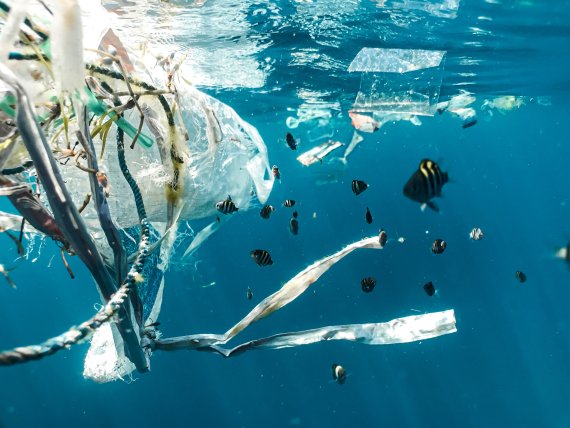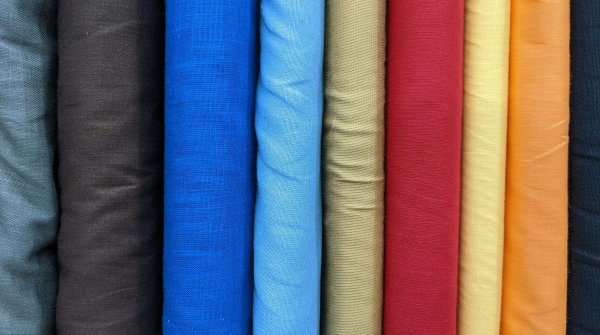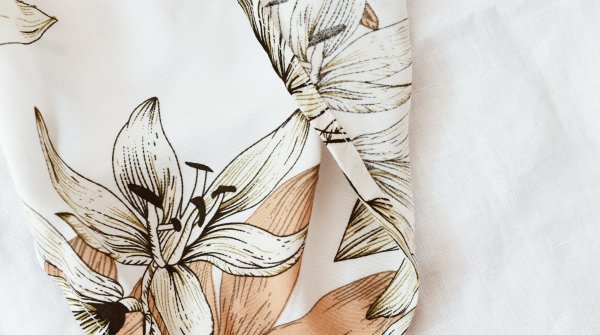When we talk about the synthetic fiber polyester, we mean all textiles and fabrics made from polyester yarn. This can be fleece or neoprene, for example. Or many textiles with a high stretch content, such as running tights or swimwear, as well as softshell jackets and all kinds of athleisure wear. The synthetic fibers are usually made of polyethylene terephthalate - PET for short - or polycarbonate, but numerous other plastics also provide the basis for polyester.

Polyester fibers are three times finer than silk and can be woven very densely into super small-pored fabrics that are windproof and waterproof. The fabric remains breathable and is also very light, heat-resistant and crease-resistant. This is particularly interesting for technical textiles, for example in the outdoor sector: from waterproof hiking clothing and textile travel equipment that needs to be compact and easy to stow away, to rucksacks, insulated or hammocks and, last but not least, tents.

Another major advantage of synthetic fibers is that they can be easily modified. Polyester fabric is often enriched with UV protection or additionally impregnated to make it even more weather-resistant.
The uncomplicated fiber can be combined perfectly with other textile fibers and is therefore often found in blended fabrics, for example with cotton or viscose. The polyester content makes the fabric more dimensionally stable and ensures that the garment is easier to care for, crease-resistant and more stretchy.
Compared to natural fibers, sports and outdoor clothing made of polyester develops unpleasant odors more quickly. This is due to the fact that the smooth fibers hardly absorb any moisture, but merely absorb it: Sweat is automatically wicked away to the outside. This makes the garment comfortable to wear for a while, as no moisture builds up and the textile never feels damp. However, the skin does, at least when sweating heavily. Polyester fibers lack the natural protective film that ensures that absorbent natural fibers such as wool or cotton do not spread an unpleasant smell of sweat for a very long time. Thanks to this, natural fibers have the ability to clean themselves. Polyesters cannot do this and therefore have to be washed in the washing machine much more often.
This in itself is a major problem: microplastics are released from the polyester fabric in the washing machine and end up in the environment via waste water. The synthetic fiber is so robust that it can hardly be broken down. And there are also downsides to the production process. Although less water is needed than in the production of cotton, the energy required is much higher. Polyester is made from crude oil and is not only found in textiles, but also in PET bottles, plastic-containing products and packaging. 100 million barrels of crude oil are used for this every year. The textile industry's share is 70 percent.

In order to conserve resources, many textile manufacturers are turning to recycled polyester. Patagonia is also a pioneer in this area and has been using fabrics made from recycled PET bottles, plastic waste from the oceans and worn-out items of clothing for years. There are also many sustainable sneaker labels that make running shoes from recycled polyester. Recycled fibers do not require the use of new petroleum and are in no way inferior to "new" fibers. However, it should not be forgotten that this does not solve the microplastic problem and that the recycling process also requires a great deal of energy. In addition, there are limits to the recycling of plastic; PET cannot be reused endlessly. And it is currently almost impossible to recycle polyester from mixed fabrics.
The good combination and processing options make polyester a versatile material that also offers good alternatives in terms of sustainability. Nevertheless, polyester has a poor eco-balance, as microplastics dissolve in the waxing machine and end up in the waste water. Polyester is also found in PET bottles and other plastic packaging.
At the end of the article we answer frequently asked questions about polyester.
What kind of fabric is polyester?
The basic building blocks of polyester are crude oil, coal, lime and natural gas. The chemical fiber is made from polyethylene terephthalate, better known as PET.
Is polyester breathable?
Polyester is breathable when it is processed using special weaving techniques or microfiber, which efficiently wick moisture away from the body and dry quickly. These properties make it particularly suitable for sports and functional clothing.
How is polyester made?
Polyester is formed into fibers using a melt spinning process. Polyester granulate is heated to 280 degrees and melted. This process produces the man-made fiber.
 ISPO TextrendsISPO Textrends Whitepaper 2027/28
ISPO TextrendsISPO Textrends Whitepaper 2027/28
- ISPO awards
- Mountain sports
- Bike
- Design
- Retail
- Fitness
- Health
- ISPO Job Market
- ISPO Munich
- ISPO Shanghai
- Running
- Brands
- Sustainability
- Olympia
- OutDoor
- Promotion
- Sports Business
- ISPO Textrends
- Triathlon
- Water sports
- Winter sports
- eSports
- SportsTech
- OutDoor by ISPO
- Heroes
- Transformation
- Sport Fashion
- Urban Culture
- Challenges of a CEO
- Trade fairs
- Sports
- Find the Balance
- Product reviews
- Newsletter Exclusive Area
- Magazine




